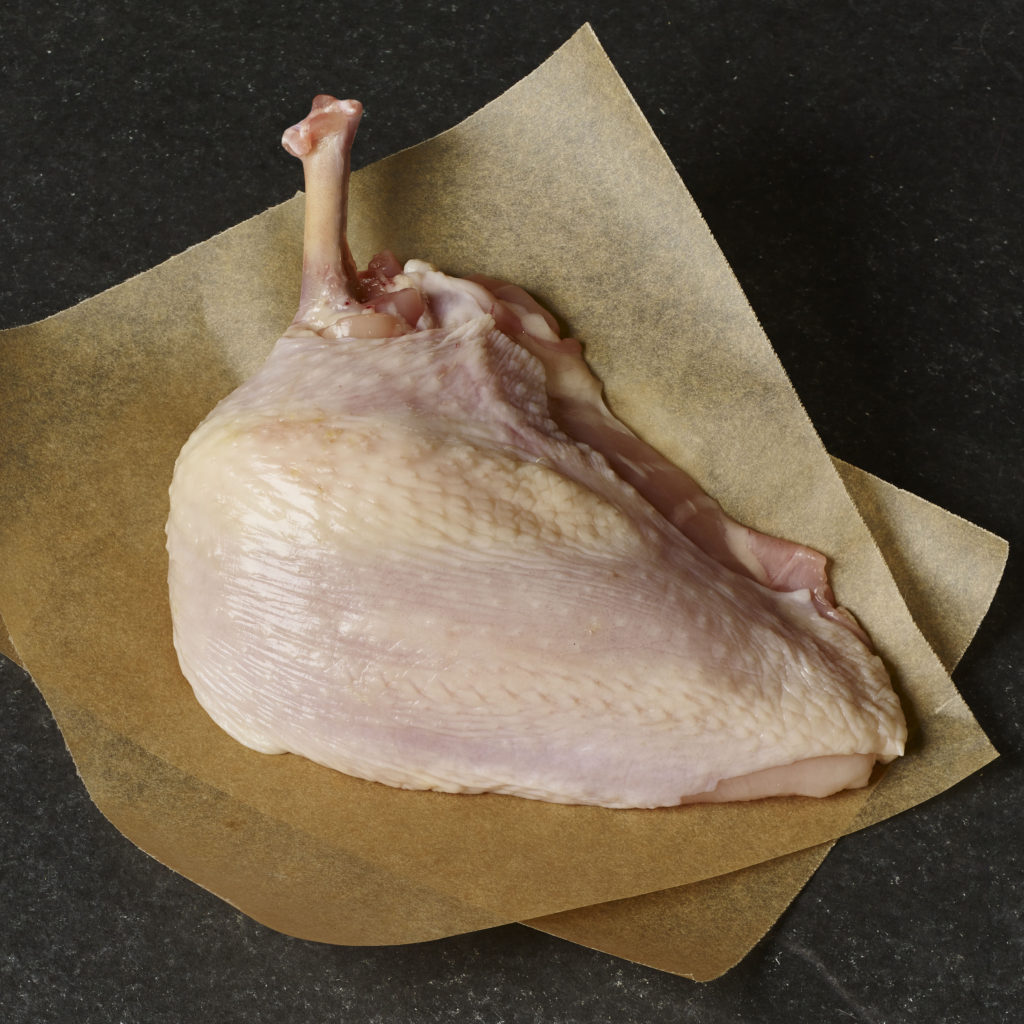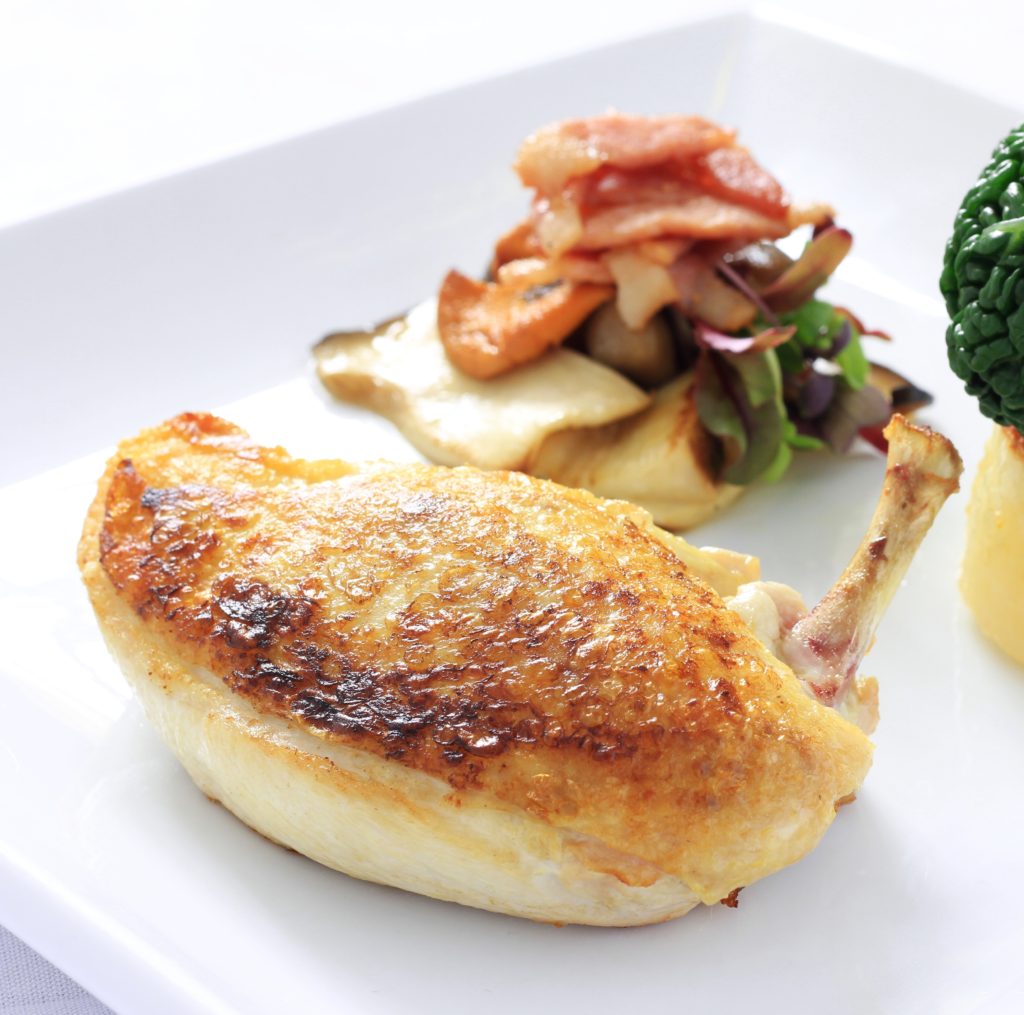The Lobel family of Lobel’s Prime Meats in Manhattan and Lobel’s of New York online butcher shop are fourth- and fifth-generation butchers. With our Cut of the Month series, we will bring you their wealth of knowledge and expertise on specific cuts of meat, including their unique characteristics, preparation methods, and how to select the best cut.

Frenched chicken breasts are a dream to cook and savor. The breasts are skin-on and boneless, except the wing drumette is still attached which makes them easy to turn and handle while cooking.
This same cut is known by a number of different names, depending on where you are from and who is doing the talking.
In France, this cut is known as Chicken Breast Supreme, or Supreme of Chicken Breast, which is also a reference to a recipe made with this cut. In the traditional recipe, the breast is sautéed and accompanied by a Supreme Sauce, which is a variation of velouté, one of the five French Mother Sauces, consisting of roux, chicken stock, heavy cream, lemon juice, and white pepper.
Here’s a video on how to make classic Chicken Supreme.
Adaptations of this recipe incorporate one or more other such ingredients as mushrooms, bacon, or onions. As a variation, these optional ingredients would make a wonderful base for a pan sauce or sautéed topping.
Origins
While most would agree that the cut’s lineage is of traditional European origins, it first appeared on the scene in the 1930s. It was adopted and popularized by major commercial airlines in the 1960s—the era of full-service inflight meals. In the food-service trade, the cut came to be known as Airline Chicken Breast. However, the term is not as well-known among consumers because of the negative association with the quality of in-flight food service.
What does Frenched mean?
More than likely, at one time or another, you have seen a rack of lamb with the bare rib bones sticking out from the eye of the rack. In that case, it is a Frenched rack of lamb.
Frenching is a process by which an intact bone is scraped clean as a way to enhance its aesthetic appeal for a dramatic and elegant presentation.
Going back to the cut’s origins, Europeans traditionally Frenched the drumette, while the airline version left the meat on the drumette.

How to Prepare
Although the traditional French preparation calls for sautéing the chicken breast, it lends itself very well to other cooking techniques.
Pan Roasting
Preheat oven to 350°F.
In an oven-proof skillet or grill pan, sear the chicken breast on the stove top over high heat, skin-side down until the skin is crispy and golden brown—about 3-5 minutes. Turn the breast over with the skin-side up, put into the oven, and roast for 10-15 minutes more, or until the breast reaches an internal temperature of 165°F.
Sautéing
Alternatively, sear the breast as above, turn it over to skin-side up, reduce the heat to medium-high, and cook for 10-15 minutes to 165°F.
Grilling
Set your grill up for indirect/zone heating. Sear the chicken breast on high heat, skin-side down for 3-4 minutes. Turn the breast skin-side up and move to the warm/indirect cooking zone. Cover the grill and let cook for 10-15 minutes to reach an internal temperature of 165°F.
Have you ever had a Frenched chicken breast? What would be your preferred cooking method? What kind of sauce or topping would you add? What side dishes would you serve with it?


